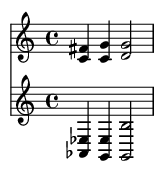Summary:
The major ninth interval is a compound interval spanning fourteen semitones, equivalent to an octave plus a major second. This bright, open-sounding interval is a cornerstone of modern harmony, providing essential color and sophistication in jazz, pop, R&B, and contemporary classical music through its use in add9 chords, major ninth chords, and melodic extensions.
Keywords:
major ninth, compound interval, extended harmony, add9 chords, major ninth chords, jazz theory, bright intervals, chord extensions, voice leading, contemporary harmony
Introduction:
Step into any modern jazz club, listen to a soulful R&B track, or revisit a classic pop ballad, and you'll hear it: a sound that's bright, airy, and full of sophisticated warmth. This is the magic of the major ninth interval. Unlike the tight, sometimes jarring intervals found in basic harmony, the major ninth adds a layer of complexity and beauty without creating harsh dissonance. It has become a defining sound of modern music, offering the perfect balance between simple, satisfying harmony and rich, expressive color.
Definition and Classification:
A major ninth is a compound interval, which means it is larger than an octave. It is built by taking a major second and extending it up by one octave. This results in an interval spanning fourteen semitones (or half steps) . While historically considered a dissonance that required careful handling, in modern contexts, its open and stable quality allows it to be treated as a consonant, colorful extension.
Interval Properties:
- Span: 14 semitones
- Compound of: Octave (12 semitones) + Major Second (2 semitones)
- Quality: Bright, open, and stable
- Common Usage: As a chord extension (the 9th) or a melodic leap
Examples:
Major Ninth from C:
The simplest example is the interval from C to the D an octave above. Notice the spacious, open sound.
Major Ninth Intervals in Common Keys:
Here are major ninths built on the tonic of several common keys: C, G, F, and D.

Harmonic Applications:
The major ninth is a chameleon in harmony. It can be a simple, colorful addition to a basic triad or the defining feature of a complex jazz chord. It's crucial to distinguish between its two most common forms: the add9 chord and the major ninth chord.
Add9 vs. Major Ninth (Maj9) Chords
- Add9 Chord (e.g., Cadd9): This is a triad (root, 3rd, 5th) with an added 9th. By omitting the 7th, it creates a clean, open, and modern sound that's popular in pop, rock, and singer-songwriter music.
- Major Ninth Chord (e.g., Cmaj9): This is a five-note chord built from a major seventh chord (root, 3rd, 5th, 7th) plus the 9th. The presence of the major 7th makes this chord sound richer, lusher, and more complex. It's a cornerstone of jazz harmony.
Listen to the difference. The Cadd9 is bright and clear, while the Cmaj9 is dreamier and more complex.

Practical Applications by Genre:
The major ninth's versatility makes it a staple across many genres. Its function changes depending on the musical context.
- Jazz: Essential in chord voicings (e.g., Cmaj9, Dm9, G13) and substitutions, providing lush textures for comping and soloing.
- Pop/Rock: Frequently used as an add9 chord (e.g., Gadd9, Cadd9) to add a modern, "open" flavor to standard progressions.
- R&B/Soul: Creates the smooth, sophisticated, and emotive textures that define the genre, often found in electric piano and guitar parts.
- Contemporary Classical: Used by composers like Debussy and Ravel to create impressionistic, floating harmonies and coloristic effects.
Voice Leading and Movement:
One of the most powerful applications of the major ninth is in smooth voice leading. In jazz, the classic ii-V-I progression is the perfect showcase. Notice how the 9th of each chord resolves gracefully or is held as a common tone, creating a seamless connection between the chords.
Example: ii-V-I Progression in C Major (Dm9 - G9 - Cmaj9)
In this progression, the ninth of Dm9 (E) becomes the third of Cmaj9. The ninth of G9 (A) resolves down by step to the fifth of Cmaj9 (G).

Historical Development:
While present in earlier music as a non-chord tone (like an appoggiatura) , the major ninth gained prominence as a true chord tone during the Romantic period. Impressionist composers like Claude Debussy and Maurice Ravel used major ninth sonorities to create the floating, ambiguous harmonies that characterize their style. With the birth of jazz, the major ninth became an indispensable part of the harmonic language, evolving from the big bands of the Swing era to the complex improvisations of Bebop and beyond.
Notable Musicians and Usage:
Bill Evans redefined the use of major ninth intervals on the jazz piano, creating delicate, impressionistic voicings that influenced generations. The Beatles helped popularize add9 chords in pop music, notably in songs like "A Hard Day's Night." Contemporary artists like John Mayer and Norah Jones continue to rely on the major ninth's expressive power, proving its timeless appeal.
Melodic Applications:
Melodically, a major ninth is a wide, expressive leap that can add drama and emotion to a phrase. Because it's a large interval, it's often used to create a climactic moment or an expressive lift in a melody before resolving to a more stable note.
Melodic Major Ninth Phrase:
Here, a leap from C to D' creates a powerful melodic peak before resolving downwards.
Theoretical Deep Dive:
- Harmonic Series: The major ninth's consonant character can be traced to physics. It is the 9th partial (or 8th overtone) in the natural harmonic series of a fundamental note, making it sound inherently stable and related to the root.
- Acoustic Consonance: Compared to the tense and jarring minor ninth (13 semitones), the major ninth has a much simpler frequency ratio, contributing to its pleasing sound.
- Harmonic Function: It serves as a color tone, adding texture and complexity without disturbing the underlying harmonic function of a chord. A Cmaj9 still functions as a tonic (I) chord, just a more colorful one.
Fun Facts:
Due to its heavy use in creating the "radio-friendly" lush sounds of the 80s and 90s, the major ninth sound is sometimes fondly called the "pop interval" or "smooth jazz interval." The famous, debated opening chord of The Beatles' "A Hard Day's Night" contains a prominent ninth, making it one of the most recognizable uses of an extended harmony in rock history.
Contemporary Voicing Techniques:
Modern pianists and guitarists often use shell voicings or rootless voicings that rely on the major ninth. By omitting the root and fifth, players can create harmonically clear yet uncluttered chords. A common Cmaj9 shell voicing might only include the notes E-B-D (the 3rd, 7th, and 9th), leaving the bass player to handle the root.
Example: Shell Voicing for Cmaj9
This voicing (E-B-D) implies the Cmaj9 sound without playing all five notes, a common technique in a jazz ensemble.

Conclusion:
The major ninth interval is far more than a theoretical concept; it is a fundamental sound of modern music. Its unique ability to add sophistication and emotional depth while maintaining a consonant, pleasing character makes it invaluable to musicians across all genres. From the simple beauty of an add9 chord in a pop song to the lush complexity of a Maj9 chord in a jazz standard, the major ninth offers a powerful tool for harmonic expression. Mastering its sound and applications is an essential step for any musician looking to expand their harmonic vocabulary and connect with the sounds of today.
References:
Levine, Mark. (1995). The Jazz Theory Book. Sher Music Co.
Tymoczko, Dmitri. (2011). A Geometry of Music: Harmony and Counterpoint in the Extended Common Practice. Oxford University Press.
Evans, Bill. (1959). Kind of Blue. Columbia Records.
The Beatles. (1964). A Hard Day's Night. Parlophone Records.
